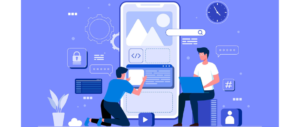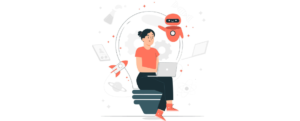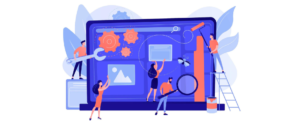
Legacy modernization is a phase that every business has to go through at some point in their life-cycle. After all, it seems like the most logical decision to take especially for systems that have been in practice for many decades. However, constant changes in the development of software, increasing options
in the market and the dynamic work environment of the organization need to be taken into consideration before the decision to modernize comes into play. Software legacy modernization should be considered as an opportunity to modernize and grow.
Vatsa Solutions has been part of many software modernization projects, for big and small organizations alike, which has added to our own experience of accurately judging the best roadmap and execution of required modernization levels. To give an example, here is a short case study of how we helped transform a legacy desktop-based management software into an end-to-end responsive web-based management system.
But where does an organization begin the arduous task of realigning its entire digital structure? When is the right time to go ahead with legacy modernization and how to predict the future effects of undergoing this transformation? There are many such questions to be answered before concluding, and even though not all of them can be answered right away, there are a few key indicators that can help you identify whether your legacy software needs an upgrade.
- Carry out an audit of existing platforms & processes
Before planning on modernization, it is well advised to carry out an audit of the existing processes and decide whether to go for upgrade or complete replacement. The foremost question to answer is “Will it be better to undergo a transformation in multiple stages or shall it be done in a single go?”.
- Aim to make the processes smarter for your business
Are there any parts of the existing platforms or processes which have become obsolete? Are there any processes that can be shortened or clubbed together? How can the process be made more effective? Try answering these questions to optimize your business processes.
- Focusing on the cost factor
The idea is to weigh both, short term as well as long term returns of Modernization, and also, to identify benefits that are non-monetary, like better customer service, time utilization, ease of use for employees, and so on.
- Being aware of risks
Many a time, new platforms or processes bring with them a certain amount of risks. This may include risks of low acceptability by employees, instability in software compatibility, no uniformity across multiple branches and so forth. The idea is to be aware of these risks beforehand, so as to be able to handle them in the best manner, with reduced or no damage.
- Choosing the right IT partner
The optimized results of Legacy Modernization depend on the right implementation and tech support by your software partner. This makes it crucial to choose the right partner, who has a complete understanding, and the capability to provide a robust tech support.
When it comes to legacy modernization, it always helps to have a strong IT support from a reliable team. With multiple long-term engagements and a near-100% retention rate, Vatsa has been at the forefront of helping its customers with legacy software modernization, unmatched expertise along with dedicated support teams have made us the preferred IT partners for our clients.
If you want to know more about how we have helped our clients modernize their legacy software, connect with us at contact@vsplc.com.





